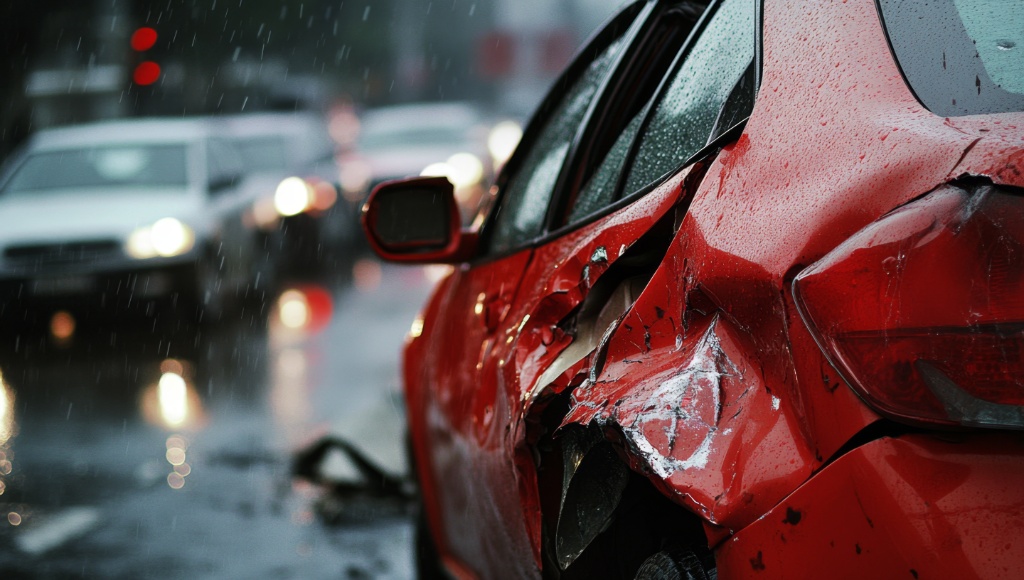March 27, 2019 | car accident Claims
British Columbia Seatbelt Laws: What you Need to Know
Table of Contents
Important Notice: Our firm can only represent clients in car accident claims that took place before May 1st, 2021. If your accident occurred after this date, we cannot assist with your case.
Cars have been equipped with seatbelts for decades. The regulation of seatbelts and the impact that they have on both drivers and passengers in the unfortunate event of a motor vehicle crash have been the subject of much debate over the years.
There are some schools of thought that would believe that seatbelts are not helpful or are too restrictive of personal freedom. However, in British Columbia, seatbelt usage is the law to prevent personal injuries.
Does British Columbia require seatbelt usage?
In short: yes. Seatbelt usage first became mandatory in 1977 in British Columbia. Section 220 of the Motor Vehicle Act, which is discussed below requires that a “seatbelt assembly” must be worn when a motor vehicle is being operated. A seatbelt assembly can include a pelvic restraint, an upper torso restraint, or both. All passengers must wear seatbelts and every seat in a vehicle that is occupied by a passenger must have a seatbelt.
What other requirements apply to seatbelts in British Columbia?
Section 220 of the Motor Vehicle Act has additional requirements which include the following:
-A person cannot sell or operate a motor vehicle unless it is equipped with AT LEAST 2 seatbelt assemblies in the front seat.
-It is unlawful for a person to sell or operate a motor vehicle that has had the seatbelts either removed or rendered inoperative.
These requirements are designed to ensure that all vehicles on the roadways of British Columbia have adequate seatbelts installed in them. This is the case regardless of whether a vehicle is simply being operated or if someone wants to sell a vehicle. (It is not necessary to add seatbelts to older vehicles that were not originally equipped seatbelts, but the number of passengers cannot exceed the seats provided.)
Is the driver responsible for passengers who do not wear seatbelts?
For passengers under the age of 16, the driver IS responsible for making sure those passengers are properly restrained by a seatbelt. This is an important additional liability consideration for drivers who have passengers under the age of 16 travelling in their vehicles. Passengers over the age of 16 are responsible for their own seatbelt usage but are still legally required to wear them.
What are the potential legal fines for failing to wear seatbelts?
At the time of publication, the current fine for not wearing a seatbelt is $167 for each violation. This fine can be applied to each individual present in the car at the time of operation over the age of 16, and additional counts can be applied to the driver for each instance of a person under 16 that is not in compliance.
In addition, a driver or passenger who does not wear a seatbelt and becomes injured in an accident may impair his or her ability to recover damages for the injury because of the failure to wear a seatbelt. Under the no-fault insurance system adopted in B.C. in May 2021, the Insurance Corporation of British Columbia holds nearly all authority for determining the responsibility for an auto accident and any benefits paid to injured parties.
ICBC has historically reduced compensation for claimants found to have contributed to their injuries because the claimants were not wearing seatbelts when the injuries occurred. However, the move to no-fault insurance is generally an advantage to such claimants since ICBC’s “Enhanced Care” accident benefits are not based on level of responsibility. Put simply, not wearing a seatbelt does not affect no-fault claims. That said, you may face higher car insurance premiums in the future because of your degree of responsibility for a crash.
Child car seat restraint requirements
In addition to the seatbelt requirements in place for adults in British Columbia, there are also a series of legal requirements related to the safety of children who are passengers in motor vehicles.
In British Columbia, there are four different stages of child seating and restraint systems that are required by law. At each age and stage, children are required to be restrained in the proper child passenger seat.
-Stage 1 requires infants and toddlers to be secured in a rear-facing infant seat away from an active frontal air bag until they are at least 12 months old and at least 20 pounds/9 kg.
-Stage 2 requires toddler and preschool children who are at least one year old and 20 pounds/9 kg to at least 40 pounds or 18 kg to be secured in a child safety seat.
-Stage 3 requires children under 9 years old to be placed in a booster seat, using a lap and shoulder belt when they are at least 40 pounds/18 kg until they are at least 9 years old or 145 cm (4 feet 9 inches), whichever comes first.
-Stage 4 requires children 12 years of age and under who are either too old or too large for booster seats to always sit in the back seat, and to wear a properly-adjusted seatbelt.
The requirements for the restraint of children are based upon a large body of safety studies concerning the impact of child restraints at various ages and stages on children. It is very important for drivers transporting children to pay close attention to the legal requirements noted above not only because failure to abide by them could result in a fine, but because they are requirements that are designed to keep children safe on the roadways of British Columbia.
How seatbelts help prevent fatalities and injuries in motor vehicle accidents
An extensive amount of research has been done over the years to determine how seatbelts help to prevent injuries and death in motor vehicle accidents.
On average, a person who is not wearing a seatbelt in a crash at a speed around 55 kilometres per hour will have the same amount of force applied as if the person fell three flights from a building.
If the speed of a crash increases to 80 km/h, a passenger not wearing a seatbelt can fly forward with a force of roughly 3,000 pounds, which is clearly enough to cause serious injury and/or death. This is the case whether a passenger is in the front seat or back seat of a vehicle.
Another great risk of failing to wear a seatbelt is that a passenger who is unbelted can injure or kill other vehicle occupants simply by the impact of flying through the vehicle.
The B.C. Coroners Service states that there were 296 vehicle-related deaths in 2021, out of 260,000 crashes reported to ICBC. In 2018, the Coroners Service stated that 29% of crash victims between 2011 and 2016 who died were not wearing any seatbelt or other
appropriate restraint.
Buckle up, it’s the law
If you are a driver or passenger in a vehicle in British Columbia, seatbelt use is the law. Apart from the legal requirements, seatbelt usage can reduce the risk of injury and/or death both for passengers and drivers for all of the reasons noted above. When you hit the road, don’t forget to buckle up!
Written by Joseph Fearon
Personal Injury Lawyer
Managing partner Joseph Fearon’s work is concentrated on serious injury litigation. He has represented clients in brain injury cases, complex accident claims, matters involving contested liability, and more.
More car accident Topics
Here’s more information on car accident related topics that we think you might find helpful.

car accident
|
November 7, 2023
The Implications of Autonomous Driving Vehicles on Car Accident Claims
The age of technology is here, and with it, self-driving vehicles. Technologically advanced vehicles, such as Tesla, have driver-assist features available to the driver. These…

car accident
|
January 31, 2020
What Are the Most Common Car Accident Injuries?
Common car accident injuries include concussion, traumatic brain injury, broken bones, whiplash, lacerations, burns, and more. Spinal cord injury, skull fracture, and internal organ damage…

car accident
|
January 31, 2020
What Is the Average Payout for a Rear End Collision?
Compared to other types of accidents like head-on collisions, a rear-ender might seem minor. Although many rear-end collisions amount to little more than a fender…
Speak With Our
Legal Team for FREE
Find Out if You Have a Case in Under 5 Minutes
Speak to a Lawyer Now!
We’re here to help.
